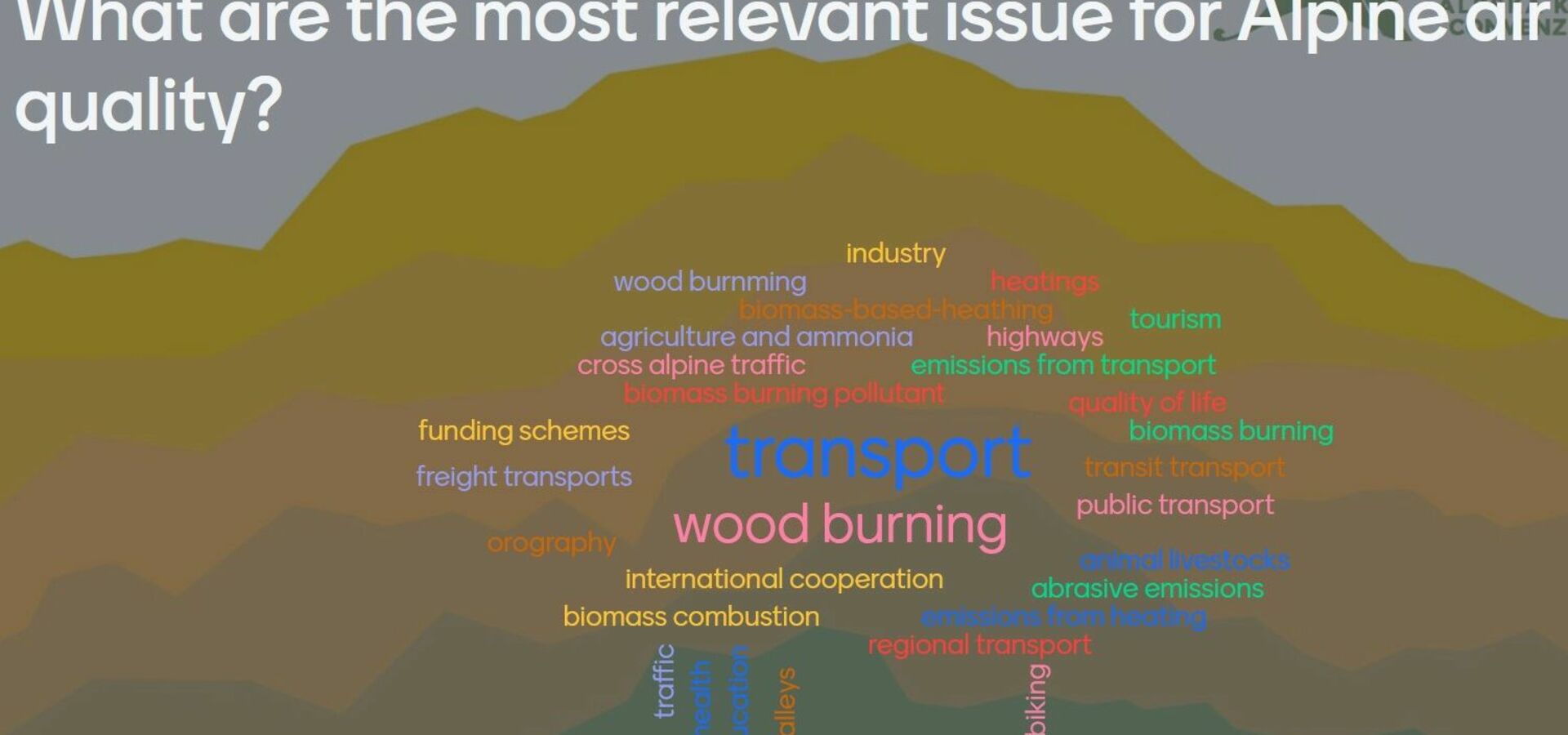The Alpine Convention has recently officially published its eighth Report on the State of the Alps. The RSA 8 is dedicated to the topic of air quality and assesses its state in the Alps. The Report finds that while air quality in the Alps is generally relatively good, several Alpine valleys and hotspots experience differing levels of pollution, and some sources of air pollution still represent a threat to the health of Alpine residents and visitors.
To gain an insight into why this might be the case, the Alpine Convention organised an event in the framework of EU Green Week on the 4th of June. Speaking at the event were some of the members of the Working Group that drafted the RSA 8, who gave an insight into the diverse nature of Alpine air. Laure Malherbe from the French Institute for Industrial Environment and Risks (INERIS) provided an overview of the status of pollutant concentrations and Alpine air quality trends as well as presenting the monitoring network in the Alpine region. Malherbe concluded that “encouraging results have been ascertained” from the monitoring stations, “a fact that shall lead us to continue the effort to reduce air pollution sources.”
The Report also found that depending on different areas and times of the year, the leading causes of air pollution are wood heating, vehicle traffic and long-range pollutant transport. During the Green Week event, Adriana Pietrodangelo, member of the Italian National Research Council and the Institute of Atmospheric Pollution Research also pointed this out: “Some of the primary sources of pollution in the Alps are biomass burning and domestic heating together with traffic. Biomass burning and domestic heating combine negatively: during the winter period, wood combustion increases, especially in the evening.”
To address these diverse issues related to air quality, the RSA 8 singles out a set of recommendations for policymakers to effectively target the key challenges for Alpine air. The speakers at the Alpine Convention event provided an overview of these recommendations, which are based on a set of smart solutions in place around the Alps. These smart solutions have been applied at different administrative levels, and some of the measures offer multiple benefits such as reducing greenhouse gas emissions and noise pollution, in addition to improving air quality. “We can count on a wide variety of measures in different sectors,” in addressing the quality of Alpine air quality, according to Matthias Rinderknecht from the Swiss Federal Office of Transport.
The Report on the State of the Alps is published every two years on topics relevant for the Alpine Convention. The eighth report is the result of a joint effort by experts from all the Alpine countries to collect and analyse data relating to air quality. The RSA 8 is based on official data, peer-reviewed studies and scientific sources in order to ensure reliable information and proposals for action.
“Air quality is a complex subject. It requires a deep knowledge of complex mechanisms, especially when considered within mountainous regions. Science and research are thus essential to have a better understanding of those phenomena at its base” – Éric Vidimian, member of the French General Council of the Environment and of Sustainable Development and coordinator of the ad hoc Working Group that prepared the RSA.
Download the presentations here
- Status and trends of Alpine Air Quality– Laure Malherbe, Ineris
- Atmospheric Pollutants and Processes in the Alps – Adriana Pietrodangelo, Giorgio Cattani, Cristina Leonardi
- RSA 8 smart solutions in the different sectors – Matthias Rinderknecht:

